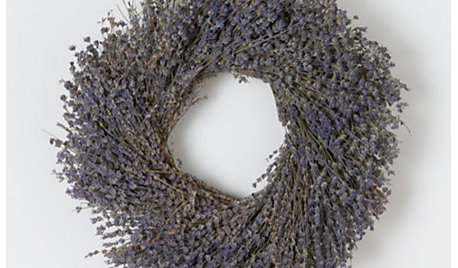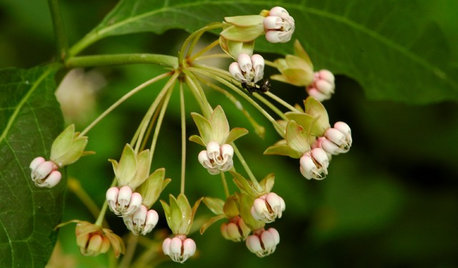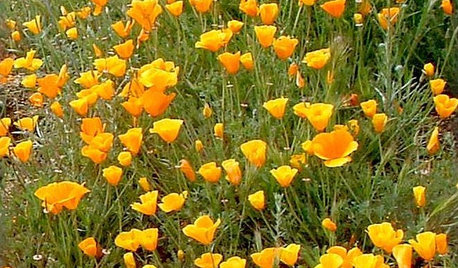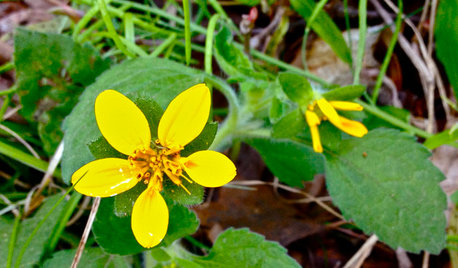Wildflower patch
jgarzasr
19 years ago
Related Stories

PRODUCT PICKSGuest Picks: A Posy of Wildflower Designs
Showcase freely growing blooms around the home with wreaths, furniture and wallpaper that outlast summer
Full Story
FALL GARDENINGBe Your Own Wildflower Nursery
Gather seeds from your garden in fall, and you'll have a selection of plants for next year — without spending a dime
Full Story
GARDENING GUIDES5 Unsung Wildflowers That Thrive in Dry Shade
Turn shady problem spots into garden idylls with with these prolific, easy-care bloomers
Full Story
GARDENING GUIDESInvite Mining Bees to Your Garden by Planting Their Favorite Plants
Look for mining bees (Andrena) pollinating woodland wildflowers in U.S. gardens this spring
Full Story
EDIBLE GARDENSHow to Grow Your Own Sweet Summer Crops
This guide will help any gardener get started on growing the freshest warm-season veggies and berries for summer
Full Story
GARDENING GUIDESGreat Design Plant: California Poppy
Fall planting: California's state flower offers a glorious spring show and spreads readily in gardens under the right conditions
Full Story
GARDENING FOR BUTTERFLIESBe a Butterfly Savior — Garden for the Monarchs
Keep hope, beauty and kindness alive in the landscape by providing a refuge for these threatened enchanters
Full Story
GROUND COVERSGive Your Lawn a Taste of the Wild
Consider the joys of an irregularly trimmed meadow lawn: It’s ecofriendly, visually interesting and still good for romping
Full Story
GARDENING GUIDESGreat Design Plant: Chrysogonum Virginianum
This tough ground cover brightens partly shady Eastern gardens with a carpet of golden flowers in midspring
Full Story
GARDENING GUIDESDo You Have This Invasive Plant in Your Yard?
Garlic mustard is spreading across the U.S. Here’s how to spot it and what to do
Full Story





ahughes798
jgarzasrOriginal Author
Related Professionals
Brownsville Landscape Contractors · El Reno Landscape Contractors · Framingham Landscape Contractors · Fruit Heights Landscape Contractors · Holland Landscape Contractors · Milford Landscape Contractors · North Plainfield Landscape Contractors · Palatine Landscape Contractors · Ridgewood Landscape Contractors · River Ridge Landscape Contractors · Woodburn Landscape Contractors · Goldenrod Landscape Contractors · Coatesville Decks, Patios & Outdoor Enclosures · Norman Decks, Patios & Outdoor Enclosures · North Aurora Decks, Patios & Outdoor Enclosuresjohn_mo
jgarzasrOriginal Author
john_mo
jgarzasrOriginal Author
Juliana63
mikeLHS68
jgarzasrOriginal Author
Elaine_NJ6
ahughes798
joepyeweed